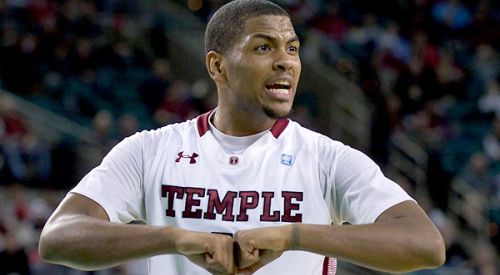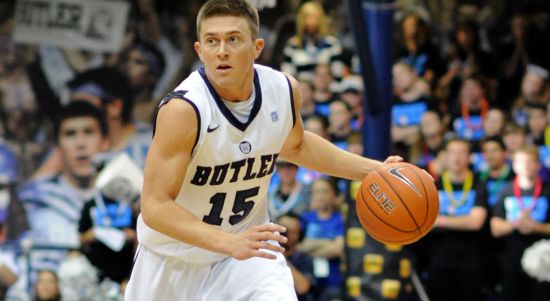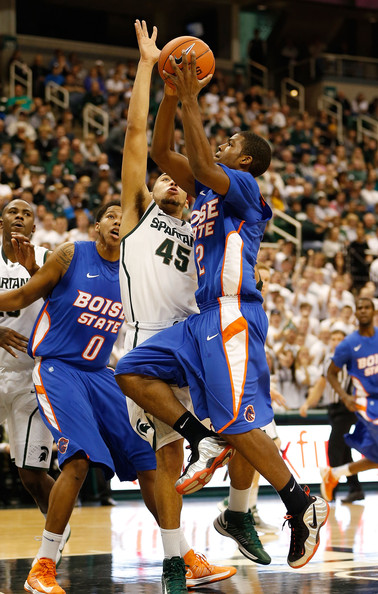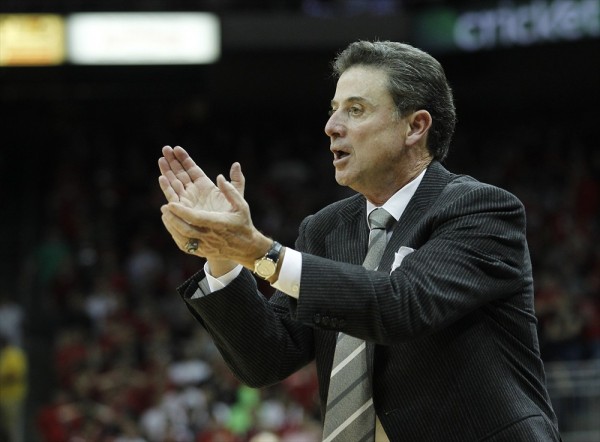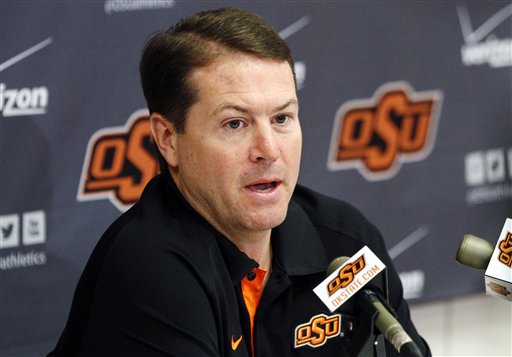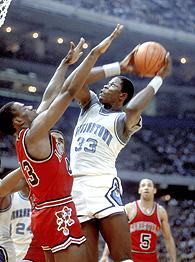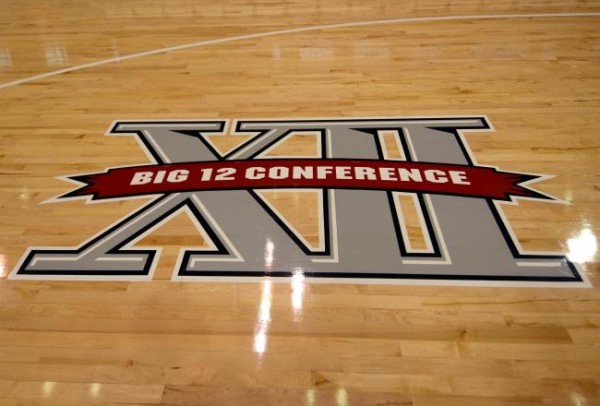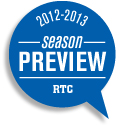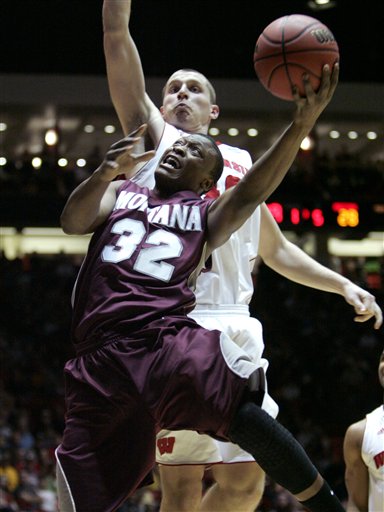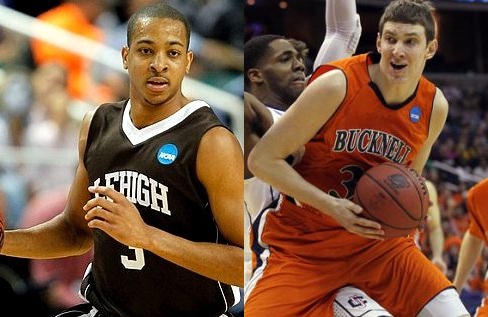Joe Dzuback is the RTC correspondent for the Atlantic 10 Conference. You can also find his musings online at Villanova by the Numbers or on Twitter @vtbnblog.
Looking Back
- And Then There Was One – Charlotte and Temple entered their Saturday games undefeated, and the 49ers beat Central Michigan by 12 to run their string to nine while Temple, facing consensus #2 Duke on a neutral court, could not keep up, losing by 23 to drop to 6-1. Charlotte is one of 14 unbeaten Division I teams remaining, and the 49ers have thrived through senior Chris Braswell’s dominant play. Coming off of a season-beginning suspension, the 6’9” senior forward/center has been on a tear, leading the team by averaging 14.3 points with 7.0 rebounds per game. Two freshmen wings, Willie Clayton and Darion Clark, have stepped up with strong board play while providing solid scoring support. Their biggest test is coming on Saturday, as they travel to Miami to face the Hurricanes of the ACC. Stay tuned.
- Fall Semester Finals – The fall semester is winding down as most Division I schools head into final examinations last week and this week. And so it is with the Atlantic-10’s non-conference schedule. With a body of work already in place, a number of teams around the conference are facing their biggest challenges of their non-conference schedules. Temple fell to Duke last Saturday, and while the loss surprised only the delusional, the margin – 23 points on a neutral court – was shocking. Butler traveled to Evanston, Illinois, and beat Northwestern of the Big Ten, but an even bigger test looms ahead as #1 Indiana has a play date with the Bulldogs next Saturday. The Musketeers stubbed their toes in Cintas Center, dropping a two-point decision to the Commodores of the SEC, but they have no time to dwell on the lost opportunity as the Crosstown Classic (the name changed from the historic “Crosstown Shootout” no doubt due to unpleasant memories of last season’s game-ending brawl) is set for Wednesday, December 19. Undefeated Charlotte travels to Miami to face the Hurricanes. Virginia Commonwealth has already seen a ranked team or two, but Alabama comes to town Saturday to give the Rams yet another opportunity to spruce up their resume.
- The (Really) Big A-10? – ESPN’s Andy Katz and Dana O’Neil reported that the seven Catholic (basketball-only) members of the Big East met with Big East Commissioner Mike Aresco Sunday to express their growing concerns about the current state of the conference and the diminishing status and quality of the conference’s basketball product.
 As the Big East continues to show signs of stress with conference realignment, sources within the Atlantic 10 have shared with Katz and O’Neil that A-10 conference members are open to the opportunities and challenges a 20- or 21-member conference would create. These sources are looking at the possibility that as many as seven of the Big East’s basketball members may opt to leave the Big East or persuade another two-to-four members to join their bloc and vote to dissolve the conference and split the proceeds; or, in the extreme, decide to leave the conference and investigate membership opportunities elsewhere (like the A-10). The sources believe that the A-10, bolstered by the additions of VCU and Butler, would be an attractive destination for those Catholic schools. A major stumbling block, however, is the revenue gap. Big East basketball schools currently realize between $1 and $1.5 million in basketball-derived TV revenues. The A-10 members anticipate a $350,000 annual payout from the league’s recently concluded TV contract.
As the Big East continues to show signs of stress with conference realignment, sources within the Atlantic 10 have shared with Katz and O’Neil that A-10 conference members are open to the opportunities and challenges a 20- or 21-member conference would create. These sources are looking at the possibility that as many as seven of the Big East’s basketball members may opt to leave the Big East or persuade another two-to-four members to join their bloc and vote to dissolve the conference and split the proceeds; or, in the extreme, decide to leave the conference and investigate membership opportunities elsewhere (like the A-10). The sources believe that the A-10, bolstered by the additions of VCU and Butler, would be an attractive destination for those Catholic schools. A major stumbling block, however, is the revenue gap. Big East basketball schools currently realize between $1 and $1.5 million in basketball-derived TV revenues. The A-10 members anticipate a $350,000 annual payout from the league’s recently concluded TV contract.
Reader’s Take
Power Rankings
Butler and Temple swap places, as do Saint Joseph’s and Virginia Commonwealth. Fordham, Rhode Island and George Washington continue to struggle while Charlotte and Dayton continue to win and place some good wins on their resumes. The conference always has a few teams that take a long time to find their spot in the pecking order. Who really belongs at this point? A number of squads are putting in their bids.
- Butler (6-2) – The resume shows two double-digit losses and a big win over a Division II opponent, but with a win over North Carolina and a road win over Northwestern, boosted the Bulldog over the Owls this week. Two games last week (IUPUI and Northwestern) saw freshman guard Kellen Dunham show again he has the potential to develop into that second reliable outside shooter behind Rotnei Clarke. A consistent outside threat should loosen up the inside for Roosevelt Jones and Khyle Marshall. Freshman center Andrew Smith’s efforts against IUPUI and a double-double versus Northwestern drew a nod from the conference, but he will probably not get those opportunities in every game. Here and there, however, his should be effective.
- Temple (6-1) –The margin of Temple’s loss to Duke Saturday, 23 points, was a surprise. Mason Plumlee and Ryan Kelly exploited a younger and less polished front court rotation (mainly forward/center Anthony Lee and Rahlir Hollis-Jefferson) on defense, causing Lee to sit with two fouls early in the first half, which forced Fran Dunphy to commit more bodies to post defense. And then Duke’s guards exploded. Dunphy needed a well-managed game from his senior guards Scootie Randall and (especially) Khalif Wyatt, but they did not deliver. Wyatt launched 10 field goal attempts in the first half, many shots were hurried and out of the offensive flow. Dunphy brought out the starting five to start the second half, but sat Wyatt just under the 14 minute mark (about six minutes into the half) and did not bring him back as he worked the deeper parts of his bench. The front court will be a problem going forward, but the back court must learn how to mask that weakness or Temple will continue to slide. Read the rest of this entry »





























